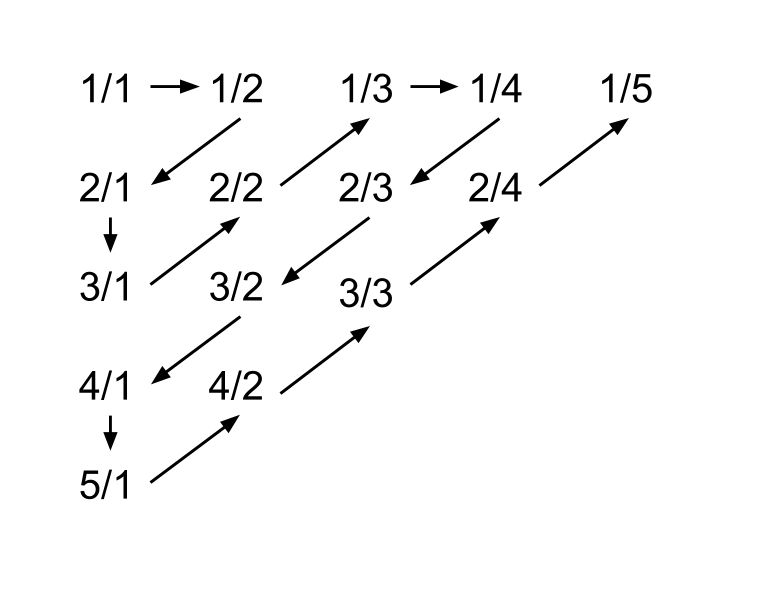Cantor Sequence

Consider the sequence { 1 / 1 , 1 / 2 , 2 / 1 , 3 / 1 , 2 / 2 , 1 / 3 , … } as shown above.
What is the 3 9 7 4 th term?
This section requires Javascript.
You are seeing this because something didn't load right. We suggest you, (a) try
refreshing the page, (b) enabling javascript if it is disabled on your browser and,
finally, (c)
loading the
non-javascript version of this page
. We're sorry about the hassle.
2 solutions
Consider the slanting diagonals as rows. We note that the last term of row 1 is 1st term, row 2 is 3rd term, row 3 is 6th term, row 4 is 10th term and so on. This means that the last term of n th row is the T n th term of the sequence, where T n = 2 n ( n + 1 ) is the triangular number.
By putting 2 n ( n + 1 ) = 3 9 7 4 ⟹ n ≈ ⌊ 2 ⋅ 3 9 7 4 ⌋ = 8 9 . We note that T 8 8 = 2 8 8 ⋅ 8 9 = 3 9 1 6 and T 8 9 = 2 8 9 ⋅ 9 0 = 4 0 0 5 . Therefore, the 3974th term is in the 89th row.
We note that for odd n , the first term (starting from bottom) of n th row a n , 1 = 1 n , the second term a n , 2 = 2 n − 1 , the third term a n , 3 = 3 n − 2 , ... ⟹ a n , k = k n − ( k − 1 ) .
Now, we have n = 8 9 and k = 3 9 7 4 − 3 9 1 6 = 5 8 , ⟹ a 8 9 , 5 8 = 5 8 8 9 − 5 7 = 5 8 3 2 .